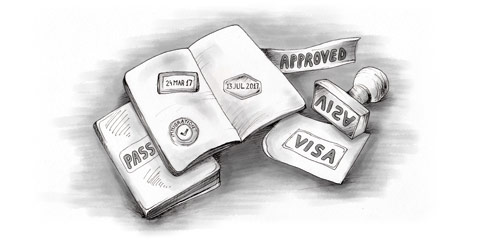After the events of the 9/11 attacks, the approach of the US towards immigration changed substantially and new countries have been added to the list of high-risk countries that could potentially pose a threat to their national security. Since then, the number of visas being issued has gradually grown to the number which US consulates face today, reaching over nine million in 2018 alone. Nonetheless, the United States’ policy is ever changing, for this reason it is important to remain up to date with the news regarding immigration and visa protocol.
Requirements for entering the US
With the exception of certain visitors, all non-resident foreigners wishing to enter the US require a visa, even those just in transit on their way to another country. The US issues a vast range of visas which are broadly divided into immigrant (permanent resident) and non-immigrant (temporary resident) visas. An immigrant visa gives you the right to travel to the US and to live and work there on a permanent basis, with the possibility of qualifying for US citizenship after five years of residence.
A non-immigrant visa allows you to travel to the US on a temporary basis, for example from six months to five years, and in certain cases to accept employment. Visas are issued by the consular section of the Department of State, which has the authority to pre-approve foreigners for travel. A large majority of visas issued annually are of temporary nature.
Governmental departments
The most important governmental organisation to know about when discussing US visas are the Department of Homeland Security (DHS). The DHS consists of three departments: the US Citizenship and Immigration Service (USCIS), Immigrations and Customs Enforcement (ICE), and Customs and Border Protection (CBP). All three have their own roles in immigration law enforcement but as a brief summary, the USCIS handle immigration statuses and permits, ICE is responsible for investigations, detentions and deportations regarding immigration, and CBP patrol the border and entry points of the country.
Further information is available on State Department websites (www.state.gov and http://travel.state.gov ) and on the USCIS website .
Eligibility
Possession of a visa does not always guarantee entry into the US. Entry into the country is stringently controlled and those who do not comply or do not have proof that they are in compliance with the immigration requirements of their visa can be fined, jailed, or deported. Generally, the United States restricts entry to persons who are of risk to public health, welfare or the security of the country. Therefore, it is important to keep in mind that applicants who possess criminal records, carry threatening diseases or lack reason for travelling may be treated as suspicious.
Visas are a complex subject and the content in this chapter is subject to change. The information provided is intended as a general guide only. Therefore, it is recommended that you do not base any decisions or actions on the information given without confirming it first with an official and reliable source, such as an American Embassy.

